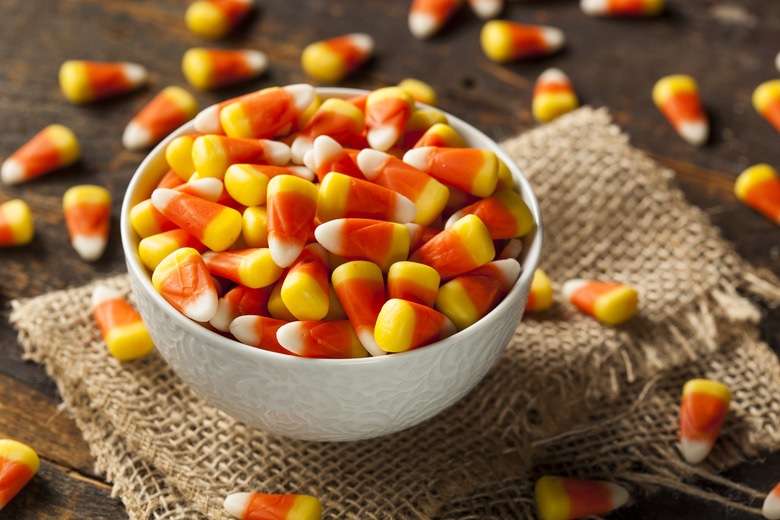How Do I Calculate The Number Of Candy Corn Pieces In A Jar?
If you've always wanted to win a contest that involves correctly guessing the amount of candy corn in a jar, then you'll need to understand the volume formula. Although there's no foolproof method for arriving at an answer, using a little math should improve your odds. There are several estimates you can make, such as space not taken up by candy corn and size of candy corn, to calculate the largest number of candy corn possibly contained in the jar — minus any candy corn you eat, of course.
TL;DR (Too Long; Didn't Read)
Comparing the volume of the jar with the volume of each candy corn will help you more accurately estimate how many are in the jar.
Step 1
Calculate the volume of one piece of candy corn. If you want a more precise estimate, find the volume of several pieces of candy corn and use the average volume. To determine the volume, measure from the base of the candy corn to the top of the candy corn. This is the height. Measure the base. This is the bottom of the candy corn kernel from side to side. Then multiply the base times the height by one-third.
Step 2
Calculate the volume of the jar. Most jars are cylindrical. Measure the base of the cylinder and the height of the cylinder. Divide the base of the cylinder by two to find the radius. Then square the radius and multiply the result by the height and pi, which is estimated at 3.14, or 22/7 as a fraction.
Step 3
Divide the volume of the jar by the average volume of candy corn. This will provide you with the maximum number of pieces of candy corn that can fit in the jar.
Step 4
Adjust your calculation downward by approximately 20 pieces of candy corn to account for empty space in the jar between each candy corn.
References
Cite This Article
MLA
McBride, Carter. "How Do I Calculate The Number Of Candy Corn Pieces In A Jar?" sciencing.com, https://www.sciencing.com/do-number-candy-corn-jar-6871312/. 29 April 2018.
APA
McBride, Carter. (2018, April 29). How Do I Calculate The Number Of Candy Corn Pieces In A Jar?. sciencing.com. Retrieved from https://www.sciencing.com/do-number-candy-corn-jar-6871312/
Chicago
McBride, Carter. How Do I Calculate The Number Of Candy Corn Pieces In A Jar? last modified March 24, 2022. https://www.sciencing.com/do-number-candy-corn-jar-6871312/
